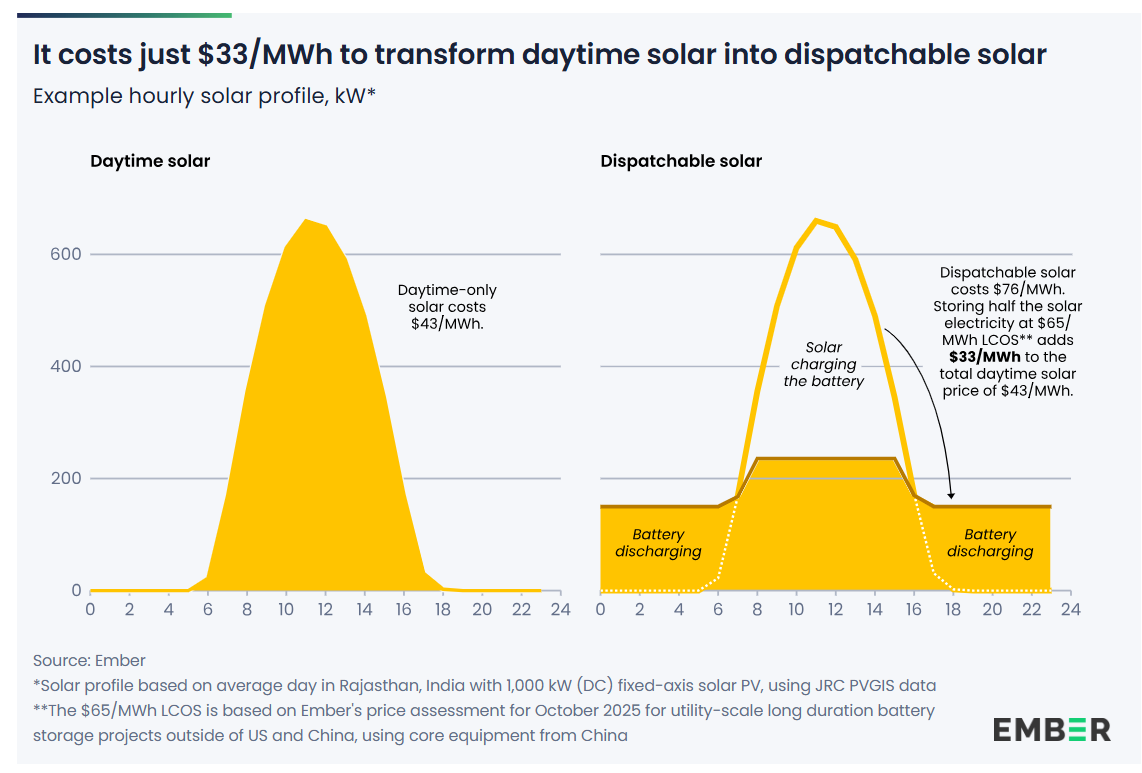A scenario in which renewables would contribute 53-57% of Puerto Rico’s electricity by 2038 “has a high likelihood of materializing,” states a draft analysis prepared by Siemens for Puerto Rico’s electric utility PREPA. In that scenario, a land-based liquefied natural gas (LNG) terminal would be constructed at San Juan; Siemens builds LNG infrastructure.
In another PREPA scenario without LNG, renewables would provide 79% of Puerto Rico’s electricity by 2038: 77% from solar and 2% from wind power, with 1900 MW of battery storage. This higher-renewables scenario is projected to cost 2.6% more than PREPA’s favored scenario in 2025, and to cost less in 2038.
The cost assumptions are not disclosed in PREPA’s draft analysis, which was published by the government energy agency. The analysis is a “black box,” without the cost assumptions used for solar, storage, LNG infrastructure, or fossil fuels. Nor does it discuss why wind power maxes out at 2%, or why solar power is not added until 2022. The addition of solar in 2022 across the scenarios permits the economic retirement of six fossil units.
For comparison, Hawaii’s least-cost energy path, as found in an independent study, would attain 46% renewables by 2021, and 58-84% renewables by 2030—saving customers $3-7 billion in the process. Hawaii, like Puerto Rico, relies for much of its electricity on fossil fuel imported across an ocean.
The Hawaii study used a recently developed utility planning model called Switch, which is designed to optimize renewables integration. The PREPA analysis used the models Aurora and PROMOD, which may be less agile in optimizing renewables plus storage.
PREPA’s analysis appears to convey pride in achieving low solar curtailment, as in this statement: “The plan … allows for incorporation of large amounts of renewable generation with very small curtailment.”
Yet if modelers allow a model to evaluate unlimited solar curtailment, the model is free to find the cost-optimal level of solar capacity—potentially at a relatively higher level of solar, with more curtailment. Beyond that, research sponsored by First Solar has found that if solar is operated with reserve capacity, additional solar may be added to the grid, cost-effectively.
Just last month, the Puerto Rico Chamber of Commerce, the Association of Mayors, and other groups advanced a goal of 50 percent renewable electricity for Puerto Rico by 2035, and 100% by 2050. While the 50% target would be exceeded by 2038 in PREPA’s favored plan, both PREPA’s higher-renewables scenario at comparable cost, and the independent study of Hawaii’s grid, suggest that more renewables, faster, could save customers money as solar and storage costs continue to decline.
Energy analyst Cathy Kunkel, noting that PREPA’s analysis points to relatively high renewables, contends that the Puerto Rico Senate should “change its energy bill to support, not hinder, this goal,” in a post published by utility think tank IEEFA. Our reporting on recent legislative moves related to renewables in Puerto Rico is posted here and here.
One error in PREPA’s analysis favors natural gas: Consider that PREPA’s 79% renewables by 2038 scenario is constrained to ensure that 80% of peak demand is supplied locally. Oddly, a variant of that scenario with a less restrictive constraint of 50% local generation, but otherwise identical specifications, has a higher system cost. Somehow the model runs prevented the scenario with the looser 50% constraint from finding the lower-cost option that was available if the constraint were tightened to 80%; that lower-cost option happens to have more storage and less gas generation.
PREPA plans to use its analysis as an input to developing an integrated resource plan for Puerto Rico. However, the utility’s plans may also have to deal with a mandate that it move to 100% renewable energy, as there are currently two bills in Puerto Rico’s legislature to that end.
This content is protected by copyright and may not be reused. If you want to cooperate with us and would like to reuse some of our content, please contact: editors@pv-magazine.com.








By submitting this form you agree to pv magazine using your data for the purposes of publishing your comment.
Your personal data will only be disclosed or otherwise transmitted to third parties for the purposes of spam filtering or if this is necessary for technical maintenance of the website. Any other transfer to third parties will not take place unless this is justified on the basis of applicable data protection regulations or if pv magazine is legally obliged to do so.
You may revoke this consent at any time with effect for the future, in which case your personal data will be deleted immediately. Otherwise, your data will be deleted if pv magazine has processed your request or the purpose of data storage is fulfilled.
Further information on data privacy can be found in our Data Protection Policy.